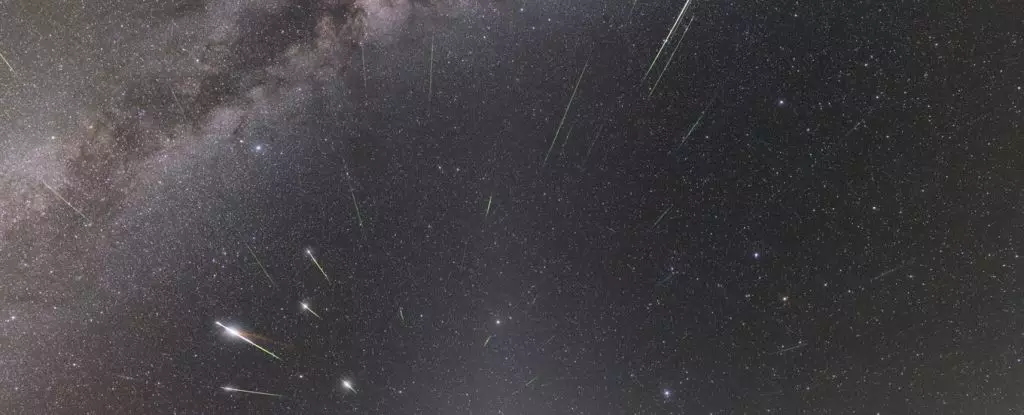As we step into May, a fascinating celestial event arrives to treat those looking skyward. The Eta Aquariid meteor shower, peaking on the nights of May 5 and 6, offers viewers a mesmerizing experience filled with streaks of light across the night sky. This shower is not just an exciting oddity but a magnificent display of nature’s beauty that invites us to reconnect with the universe. It’s the perfect opportunity to leave behind the cacophony of daily life and immerse oneself in the raw wonders of the cosmos.
The allure of meteor showers lies in their ephemeral beauty. Every year, Earth plows through the trails of cosmic debris left behind by comets—those ancient travelers that have been dancing around our sun for centuries. The Eta Aquariids, in particular, are remnants of Halley’s Comet, which revisits our vicinity every 76 years, making its debris remarkably timeless. As Earth encounters these pieces of space dust, they ignite in a spectacular fireworks display upon entering the atmosphere, offering one of the most enchanting sights humanity has the privilege of witnessing.
Ideal Viewing Conditions
With the right conditions, you can amplify your stargazing experience. To truly savor the Eta Aquariid meteor shower, a few guidelines will greatly enhance your viewing experience. First and foremost, seek a location away from the glare of city lights—ideally a dark area where the vastness of the sky can be fully appreciated. Bring along a comfortable blanket or chair for reclining. Perhaps now is the time to invite friends or family; there’s nothing like the shared thrill of watching shooting stars.
Timing is crucial as well. The ideal viewing occurs during the early hours before dawn when the skies are darkest and the meteors are most visible. While the Southern Hemisphere will enjoy an optimal display, with estimates ranging up to 60 meteors per hour, the Northern Hemisphere won’t miss out entirely, catching a sprinkle of up to 30 meteors when conditions are favorable. Unfortunately, the much-anticipated full moon could cast some light, but fear not; it will set before the spectacle reaches its peak, giving viewers a decent chance to witness this enchanting display.
The Science Behind the Magic
Understanding the science behind meteor showers adds depth to the experience. Each meteor you see is essentially a small particle—often no larger than a grain of sand—traveling at speeds exceeding 70,000 miles per hour. As these fragments collide with Earth’s atmosphere, the resulting friction and heat cause them to vaporize, producing the glowing trails that we are awed by. Realizing that what captures your attention is ancient debris shaped by the gravitational ballet of our solar system transforms the act of observation into a reflection of the cosmos’ history.
What makes the Eta Aquariid shower particularly special is its origin. Halley’s Comet, humanity’s most famous comet, has fascinated astronomers for generations, and its trails remind us of how interconnected we are with celestial bodies. Not only does this shower connect us to the distant past of our solar system, but it also serves as a prompt for us to consider the vastness of space and our place within it.
Plan Ahead for Future Astronomical Wonders
If you can’t catch the peak of the Eta Aquariids, don’t be disheartened. This meteor shower’s magic lingers longer, extending its presence until May 28. Staying informed about upcoming celestial events is easier than ever; resources like the International Meteor Organization provide comprehensive calendars that ensure you won’t miss out on future astronomical delights.
As you settle in for the show, remember that watching meteor showers is more than just a hobby; it’s an awakening of curiosity and appreciation for the universe. So, gather your loved ones, take a moment to escape into the night sky, and enjoy the cosmic wonders that speak to the human spirit. As countless meteors streak overhead, celebrate the magic of the universe—the sheer beauty of it all. Your moment awaits, so don’t let it pass you by!

